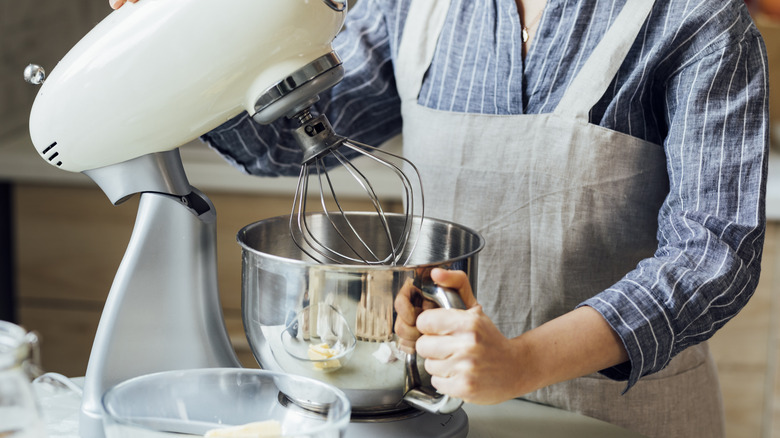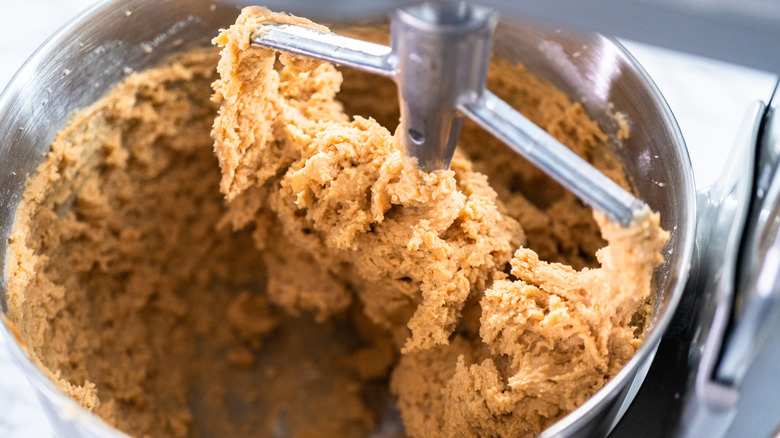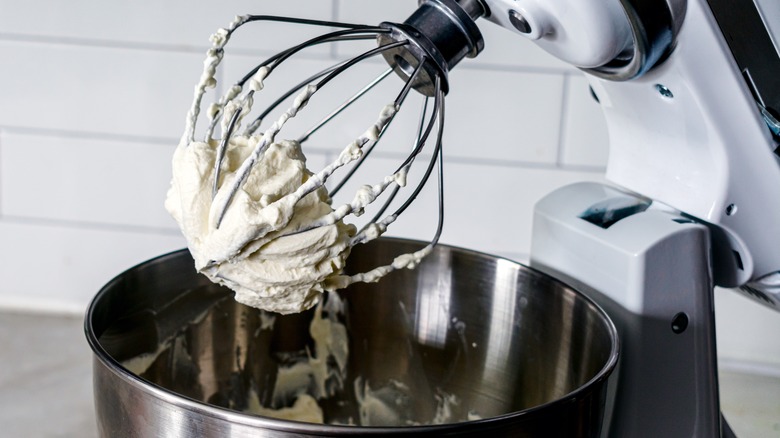Why You Shouldn't Always Adhere To The Numbers On Your Stand Mixer
When you're baking up a batch of delicious homemade chocolate chip cookies, the stand mixer can take a little bit of effort out of your prep work. The kitchen gadgets are great for whipping creams, combining ingredients, and mixing up batters. They feature numbered dials corresponding to different speeds — perfect for a variety of different uses.
While it may be tempting to crank up the dial to get your treats in the oven as fast as possible, it's important to pay attention to your specific machine. If a recipe calls for a medium-speed mix, don't just turn that dial halfway — it may actually be too fast.
Stand mixers are much more powerful than mixing by hand, and may not even be necessary for smaller bakes. So cranking the machine up to a five out of 10 may actually be too intense for the food. High speeds could result in over-mixing the batter. Instead, you'll want to eyeball it. Keep an eye on the intensity of the mixing and adjust the dial accordingly.
Overmixing could cause texture issues
If you accidentally turn your mixer's speed up too far, you could risk overmixing your baked goods. Depending on what you're making, that could mean that those treats come out less than perfect. Overmixed cake batter could have a denser, gummy feel once it's been baked up. A dry and crumbly texture could be present in overmixed cookie dough, thanks to extra air being folded in during the mixing process.
By keeping a close eye on the speed of your mixer, you'll be able to gauge just how fast the mixing actually needs to be. As a general rule, cookie dough should be mixed as little as necessary to evenly combine all its ingredients. The same goes for cake batter, which should only be mixed until all wet and dry ingredients have been equally combined. Allowing your stand mixer to work at a lower speed will make it easier for you to keep an eye on the whole process — ensuring your bakes come out perfectly fluffy every time.
What are the faster speeds used for?
Stand mixers can do more than just potentially cause issues with the finished feel of your baked goods. The higher the speed on the mixer is set, the more strain it causes to the machine's motor. Causing that extra strain for extended periods of time could make the machine overheat – or even cause damage to its components.
So, what are the high-speed settings used for, if they should be avoided when baking up treats? If you swap in the whisk attachment on the mixer, higher speeds can be beneficial for whipping up some heavy cream or whipping egg whites to fold into your recipes. Both are lighter ingredients that won't cause so much strain on the mixer, and benefit from a texture change when whipped at high speeds. (Just be careful not to over-whip the egg whites, since they could curdle.)
The next time you bake up a batch of cupcakes, resist the urge to speed production up. Instead, keep that dial turned down a little slower, and protect the texture of your baked treats.


